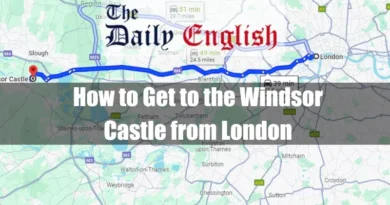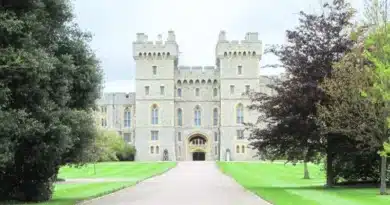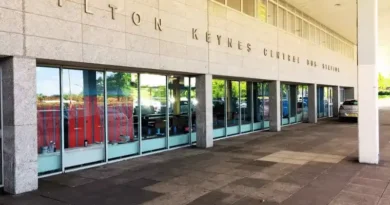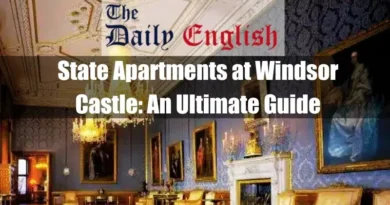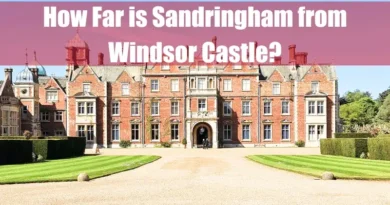Get to Windsor Castle From Cambridge
Key Points
- Windsor Castle is approximately 71.3 miles from Cambridge via the M25 or around 74.4 miles via the A1(M).
- By car, the fastest and most efficient route is via the M25, covering approximately 71.3 miles in around 1 hour and 28 minutes under normal traffic. This route avoids congestion in North London and offers clear motorway continuity, making it the best driving choice.
- An alternative by car via the A1(M) is slightly longer at 74.4 miles and around 1 hour and 47 minutes, passing through more urban areas—better suited if the M25 is heavily congested.
- By train, the quickest route takes about 1 hour and 57 minutes, involving a non-stop service to London King’s Cross, followed by an Underground or Elizabeth Line connection via either Paddington or Farringdon, then a short train to Windsor and a brief walk to the castle. The train is efficient if connections align smoothly.
- For cyclists, the most scenic route is via National Cycle Route 61, spanning 77.6 miles over about 6 hours and 44 minutes, with highlights including Hatfield House and the Lee Valley. Though longer and requiring stamina, it’s ideal for leisure riders seeking a scenic adventure.
- Ultimately, for speed and ease, the M25 car route stands out as the best overall option, while the train offers a reliable alternative for those preferring public transport.
Routes Comparison Table
| Mode | Route | Distance | Estimated Time | Notable Features | Potential Drawbacks |
|---|---|---|---|---|---|
| 🚗 Car | Via M25 | ~71.3 miles | ~1 hr 28 min | Fastest under normal conditions; mostly motorways; avoids North London traffic | M25 congestion risk |
| 🚗 Car | Via A1(M) | ~74.4 miles | ~1 hr 47 min | Alternative if M25 is congested; more urban driving | Longer; more traffic-prone areas |
| 🚆 Train | King’s Cross → Farringdon → Slough | – | ~2 hr 9 min | Efficient; Elizabeth Line; minimal walking | Relies on tight connections |
| 🚆 Train | King’s Cross → Paddington → Slough | – | ~1 hr 57–2 hr 9 min | Fastest option in evenings; fewer train stops | Dependent on Tube timing |
| 🚆 Train | Liverpool Street → Vauxhall | – | ~2 hr 33 min | May suit those near Liverpool Street | Longest; many Tube/train stops |
| 🚆 Train | King’s Cross → Vauxhall | – | ~2 hr 22 min | Fewer stops than Liverpool St route | Roundabout; slow mainline leg |
| 🚆 Train | King’s Cross → Farringdon → Slough (delay) | – | ~2 hr 9–2 hr 19 min | Reflects delay impact; realistic timing | Minor delays cause large impacts |
| 🚴 Cycle | Via National Cycle Route 61 | ~77.6 miles | ~6 hr 44 min | Scenic route; Hatfield, Lee Valley, Jubilee River | Requires endurance; some traffic |
| 🚴 Cycle | Via B1368 | ~84.2 miles | ~7 hr 19 min | Through traditional villages (e.g., Much Hadham, Ware) | Longer distance; rural road safety |
| 🚴 Cycle | Via B1368 + NCN 12 | ~81.2 miles | ~7 hr 3 min | Combines scenic cycleways; includes Grafham Water, Stevenage | Some segments may be restricted or poorly surfaced |
📌 Notes:
- Car Routes: Best for flexibility. The M25 is quicker, while the A1(M) route serves as a backup.
- Train Routes: Vary greatly in efficiency based on timing and connection reliability. King’s Cross to Paddington is fastest in evenings.
- Cycle Routes: Suit seasoned riders with good planning. National routes offer scenic, low-traffic paths but may need detours.
Getting to Windsor Castle from Cambridge by Car
Travelling from Cambridge to Windsor Castle by car is a convenient and scenic journey, with two main routes available. Below are detailed driving instructions for each route, including every necessary turn, junction, and road name to ensure you stay confidently on course.
Route 1: Via M25
The fastest route from Cambridge to Windsor Castle under usual traffic conditions covers a distance of approximately 71.3 miles and takes around 1 hour and 28 minutes to complete.
- Start in Cambridge.
- Head southeast on Hills Rd/A1307 towards Station Rd – 0.2 miles.
- Turn right onto Brooklands Avenue – 0.4 miles.
- Turn left onto Trumpington Rd/A1134 – 0.8 miles.
- Continue onto High St/A1309, and follow the A1309 – 1.5 miles.
- At the roundabout, take the 2nd exit onto Cambridge Rd/A10 and continue to follow the A10 – 8.8 miles.
- At the roundabout, take the 3rd exit onto A505 – 0.8 miles.
- At the next roundabout, take the 2nd exit, staying on A505 – 1.6 miles.
- Continue at the roundabout by taking the 2nd exit onto Baldock Rd/A505 – 8.3 miles.
- Take the 1st exit at the roundabout, continuing on A505 – 0.5 miles.
- Use the left lane to merge onto A1(M) via the ramp signposted London/Stevenage/Luton Airport – 0.4 miles.
Continue on A1(M) to Hatfield – 15 minutes (15.4 miles):
- Merge onto A1(M) – 15.1 miles.
- Take exit 3 for A414 towards St Albans/Welham Green – 0.3 miles.
Join M25 from A414 and A405 – 12 minutes (7.3 miles):
- At Roehyde Interchange, take the 2nd exit onto N Orbital Rd/A414 – 3.0 miles.
- At London Colney Roundabout, take the 3rd exit to stay on A414 – 2.0 miles.
- Take the 2nd exit onto A405 – 1.3 miles at Park Street Roundabout.
- At the next roundabout, take the 1st exit, continuing on A405 – 0.5 miles.
- Take the 3rd exit onto the M25(S) ramp at Bricket Wood Junction, signposted M40/M4/M3/Heathrow Airport – 0.6 miles.
Continue on M25 to Slough – 22 minutes (21.6 miles):
- Merge onto M25 – 19.1 miles.
- At junction 15, use the left 2 lanes to merge onto M4 towards Slough – 2.2 miles.
- Take the A4 exit towards Colnbrook/B470/Datchet/Langley – 0.3 miles.
Final Leg to Windsor Castle – 10 minutes (3.6 miles):
- At Langley Roundabout, take the 2nd exit onto Major’s Farm Rd/B470 – 1.7 miles.
- Take the 2nd exit onto London Rd/B376/B470 – 210 ft at the roundabout.
- At the next roundabout, take the 1st exit onto High St/B470 – 0.2 miles.
- Turn right onto Windsor Rd/B470 – 1.4 miles.
- Turn left onto Thames St/B3022 – 0.2 miles. (Note: Parts of this road may be closed at certain times or days)
- Turn left onto Castle Hill – 266 ft.
You’ve arrived at Windsor Castle.

Route 2: Via A1(M)
An alternative route from Cambridge to Windsor Castle covers a longer distance of approximately 74.4 miles and takes around 1 hour and 47 minutes under ideal traffic conditions.
- Start in Cambridge.
- Head southeast on Hills Rd/A1307 towards Station Rd – 0.2 miles.
- Turn right onto Brooklands Avenue – 0.4 miles.
- Turn left onto Trumpington Rd/A1134 – 0.8 miles.
- Continue onto High St/A1309, following A1309 – 1.5 miles.
- Take the 2nd exit onto Cambridge Rd/A10 – 8.8 miles at the roundabout.
- At the roundabout, take the 3rd exit onto A505 – 0.8 miles.
- At the next two roundabouts, take the 2nd exit each time to stay on A505 – a total of 1.6 miles.
- At the following roundabout, take the 2nd exit onto Baldock Rd/A505 and continue to follow A505 – for 8.3 miles.
- At the roundabout, take the 1st exit onto A505 – 0.5 miles.
- Merge onto A1(M) via the ramp towards London/Stevenage/Luton Airport – 21.2 miles.
Continue on A1 to the North Circular (A406):
- Continue onto A1 – 2.7 miles.
- Take the 2nd exit onto Barnet By-Pass/Barnet Way/A1 – 1.5 miles at Stirling Corner.
- Slight left towards Watford Way/A1 – 427 ft.
- Merge onto Watford Way/A1 – 0.5 miles.
- At Mill Hill Circus, take the 2nd exit onto Barnet By-Pass/Watford Way/A1 – 1.2 miles.
- Keep right to continue on Watford Way – 1.5 miles.
- Continue onto Hendon Way/A41 – 0.4 miles.
- Use the left lane to take the ramp to A406 – 0.1 miles.
- At Brent Cross Interchange, take the 3rd exit onto the A406 (W) ramp to M1/Watford/N Circular/A40/M4/Harrow/Wembley/Neasden – 0.2 miles.
- Merge onto North Circular Rd/A406 – 3.7 miles.
- Keep right to stay on A406 – 1.0 mile.
- At Hanger Lane Gyratory, take the 4th exit onto Western Ave/A40 – 3.2 miles.
Head towards the M4 via A312:
- Use the left lane to take the ramp to Heathrow Airport/Hayes/Southall/Yeading/A312 – 0.2 miles.
- At the roundabout, take the 1st exit onto Church Rd/A312 – 0.7 miles.
- At the next two roundabouts, take the 2nd exit to stay on The Parkway/A312 – a total of 2.8 miles.
- At Cranford Parkway Interchange, take the 5th exit onto the M4 ramp towards Heathrow Airport/M25/Terminals/Slough – 0.7 miles.
- Merge onto M4 – 4.9 miles.
- Take the A4 exit towards Colnbrook/B470/Datchet/Langley – 0.3 miles.
Final approach to Windsor Castle – 10 minutes (3.6 miles):
- At Langley Roundabout, take the 2nd exit onto Major’s Farm Rd/B470 – 1.7 miles.
- Take the 2nd exit onto London Rd/B376/B470 – 210 ft at the roundabout.
- At the next roundabout, take the 1st exit onto High St/B470 – 0.2 miles.
- Turn right onto Windsor Rd/B470 – 1.4 miles.
- Turn left onto Thames St/B3022 – 0.2 miles. (The road may be closed at times)
- Turn left onto Castle Hill – 266 ft.
You have reached Windsor Castle.
- Route 1 via M25: Quicker under normal conditions and avoids North London traffic. Best choice for speed and motorway continuity.
- Route 2 via A1(M): A longer route through urban areas, useful as an alternative during M25 congestion.
Always check live traffic updates and road closures (especially around Windsor town centre) before setting off to ensure a smooth journey.
Getting to Windsor Castle From Cambridge by Train
Travelling by train from Cambridge to Windsor Castle involves at least one change in London and can take anywhere between 1 hour 57 minutes and 2 hours 33 minutes, depending on the route taken. The total journey time is influenced by factors such as the number of train changes, walking transfers between stations, length of underground segments, and overall connectivity between services.
Below is a breakdown of the main route options and the reasons behind the variations in travel time.
1. Route via King’s Cross, Farringdon and Slough (Approx. 2 hr 9 min)
This is one of the more efficient and commonly available routes. It involves:
- A non-stop train from Cambridge to London King’s Cross (approx. 48 minutes)
- A short walk to St Pancras International
- A Thameslink service to Farringdon (approx. 4 minutes)
- The Elizabeth Line from Farringdon to Slough (approx. 38 minutes, with 10 intermediate stops)
- A final GWR train to Windsor & Eton Central (approx. 6 minutes)
- A 7-minute walk to Windsor Castle
This route is efficient due to its tight connections and fast services, even with multiple changes. However, it relies on a well-timed sequence—a delay in any segment could cause longer waits for the next train.
2. Route via King’s Cross, Paddington and Slough (Approx. 1 hr 57 min – 2 hr 9 min)
Another fast route, particularly in the evening, which includes:
- A non-stop train to King’s Cross
- A walk to King’s Cross St. Pancras Underground Station
- A short Hammersmith & City or Circle line journey (around 10 minutes with 5 stops) to Paddington
- A direct GWR service from Paddington to Slough (15–17 minutes)
- A short train ride to Windsor & Eton Central
- A final walk to the castle
This route can be faster in the evenings due to less busy platforms and quicker interchanges, which is why the shortest journey (1 hr 57 min) occurs in the evening. However, if waiting times between connections increase, the journey may take up to 2 hr 9 min.

3. Route via Liverpool Street and Vauxhall (Approx. 2 hr 33 min)
This is the longest and slowest route, typically involving:
- A Greater Anglia service from Cambridge to London Liverpool Street, with 7 intermediate stops (approx. 57 minutes)
- A short walk to Tottenham Hale Underground Station
- The Victoria line from Tottenham Hale to Vauxhall, covering 11 stops (approx. 23 minutes)
- A South Western Railway train from Vauxhall to Windsor & Eton Riverside with 12 stops (approx. 49 minutes)
- A 10-minute walk to the castle
This route takes longer mainly because of the larger number of stops, longer underground travel, and slightly longer walk at the end. It may suit passengers who find it easier to access Liverpool Street or prefer to avoid certain stations, but it is not the quickest option.
4. Route via King’s Cross, Vauxhall and Windsor & Eton Riverside (Approx. 2 hr 22 min)
This is a variation on the previous route but starts via King’s Cross, not Liverpool Street:
- Train from Cambridge to King’s Cross (non-stop)
- A walk and underground trip via the Victoria Line to Vauxhall
- South Western Railway train to Windsor & Eton Riverside
- A final 10-minute walk to the castle
Though this route has fewer stops than the Liverpool Street option, it still takes longer than the Elizabeth Line or Paddington route due to a slightly more roundabout journey across London and because the train from Vauxhall to Windsor includes 12 stops.
5. Route with Delayed Departures (Approx. 2 hr 9 min – 2 hr 19 min)
When a train departs Cambridge late (such as the 8:54 AM departure, which was 10 minutes late), the result can be a longer wait for onward services, particularly from Slough to Windsor. In this example:
- A 40-minute non-stop train to King’s Cross
- Connections to Farringdon and Slough as before
- A longer layover at Slough before the train to Windsor (approx. 19 minutes)
- The total journey extended to 2 hours 9 minutes, despite an otherwise efficient route
This illustrates how even a minor delay at the start can cascade and lengthen the total travel time.
In short, the fastest and most efficient train routes from Cambridge to Windsor Castle are typically those that:
- Use King’s Cross or Paddington as the London entry point
- Connect to Slough via the Elizabeth Line or GWR
- Have minimal stops and short walking transfers
Routes via Liverpool Street or the South Western Railway from Vauxhall tend to be longer due to more stops and slower underground legs.
Plan accordingly based on your timing preferences, connection comfort, and transfer tolerance, as a well-timed journey can save over 30 minutes compared to the slower options.
Getting to Windsor Castle From Cambridge By Cycle
Cycling from Cambridge to Windsor Castle offers several routes, each with distinct characteristics and notable landmarks. Below are three primary options:
1. Via National Cycle Route 61
- Distance: Approximately 77.6 miles
- Estimated Time: 6 hours 44 minutes
- Elevation Gain: 1,434 feet
- Elevation Loss: 1,352 feet
- Highest Point: 446 feet
- Lowest Point: 39 feet
This route incorporates National Cycle Route 61, which extends from Maidenhead to Hoddesdon, passing through Hatfield, Welwyn Garden City, and Hertford. The path includes sections along the Jubilee River and traverses the Lee Valley, offering scenic views and relatively flat terrain.
Notable Landmarks Along the Route:
- Hatfield House: A prime example of Jacobean architecture set within expansive gardens.
- Welwyn Roman Baths: Ancient Roman bathhouse ruins offering historical insights.
- Hertford Castle: A historic castle with picturesque grounds.
2. Via B1368
- Distance: Approximately 84.2 miles
- Estimated Time: 7 hours 19 minutes
- Elevation Gain: 1,276 feet
- Elevation Loss: 1,194 feet
- Highest Point: 446 feet
- Lowest Point: 20 feet
This route follows the B1368 road, passing through several charming villages and offering a blend of gentle hills and flat stretches. Cyclists will experience a mix of rural landscapes and small-town atmospheres.
Notable Landmarks Along the Route:
- Puckeridge: A historic village with traditional English pubs and architecture.
- Much Hadham: Known for its picturesque streets and the Henry Moore Foundation, showcasing sculptures and artworks.
- Ware: Home to the Ware Museum and scenic riverside views along the River Lea.
3. Via B1368 and National Cycle Route 12
- Distance: Approximately 81.2 miles
- Estimated Time: 7 hours 3 minutes
- Elevation Gain: 1,749 feet
- Elevation Loss: 1,667 feet
- Highest Point: 446 feet
- Lowest Point: 39 feet
This combined route utilizes both the B1368 and sections of National Cycle Route 12. However, it’s important to note that certain segments may have restricted usage or traverse private roads, potentially requiring detours or permissions. National Cycle Route 12, when complete, will connect Enfield Lock in London to Grimsby, passing through areas like Stevenage and St Neots.
Notable Landmarks Along the Route:
- Stevenage: Features the Fairlands Valley Park, a large recreational area with lakes and trails.
- St Neots: A charming market town along the River Great Ouse, offering riverside parks and historical sites.
- Grafham Water: A large reservoir with opportunities for bird watching and picnicking.
General Considerations for All Routes:
- Terrain: Routes encompass a mix of flat sections and gentle hills; cyclists should prepare for varying elevations.
- Road Conditions: Some paths may include unpaved or less-maintained sections; suitable tyres and equipment are advisable.
- Access Restrictions: Be aware of potential restricted areas or private roads, especially on National Cycle Route 12 routes.
- Facilities: Availability of rest stops, eateries, and accommodation varies; plan accordingly.
Before embarking on your journey, it’s recommended to consult detailed maps and verify current route conditions to ensure a safe and enjoyable ride.
Conclusion
Reaching Windsor Castle from Cambridge offers several travel options to suit different preferences. For speed and convenience, driving via the M25 stands out as the most efficient route, while train travel provides a dependable and comfortable alternative—particularly via King’s Cross and Slough. Cycling via National Cycle Route 61 presents a picturesque and rewarding journey for those seeking a scenic and active adventure. Whichever mode you choose, planning ahead and checking live updates will help ensure a smooth and enjoyable trip to one of Britain’s most iconic royal landmarks.




